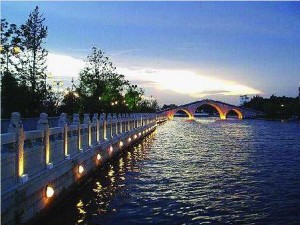
The low-lying willow and pagoda roof house are lined on the side of the Suzhou Canal, evoking the ancient history of the city. Suzhou was established 2,500 years ago, of which the most famous are Grand canals and private gardens, making Suzhou one of China’s most famous tourist cities. Moreover, Suzhou is also the main manufacturing center of silk. The Suzhou Silk Museum displays unearthed silk fabrics over history, best products from other parts of the country and tools and machines recording the whole process of the silk production.
Here listed are 10 things you must see and never miss out in Suzhou:
1. Suzhou Silk Factory
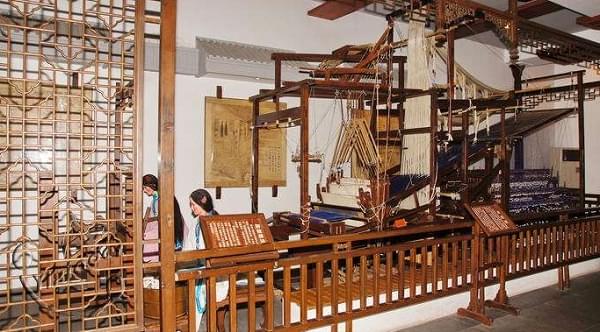
China is known for its silk. So it’s a must to visit a silk factory. A silkworm spins all its silk till its death and a candle won’t stop its tears until it is fully burnt.” This Tang poem accurately describes the property of the silkworm. Despite technological development, a silkworm can only produce a certain amount of silk—1000 meters in its lifespan of 28 days. The rarity of the raw material is the deciding factor of both the value and the mystery of silk.
2. China Grand Canal
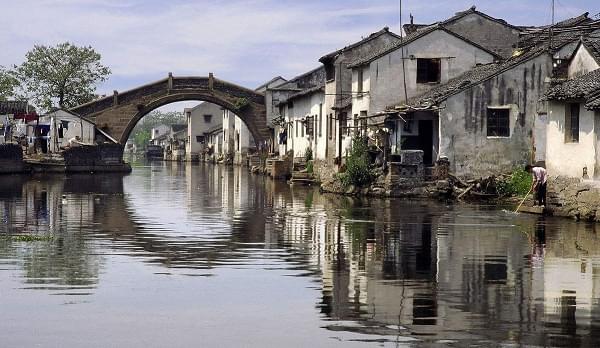
It is one of the greatest projects constructed in ancient China, famous for its oldest and longest canal in the world, begins from Beijing and ends at Hangzhou, so called Jinghang Dayunhe in Chinese. In ancient China, the Grand Canal plays an important role to connect river systems for navigation between the north and south in China, promote the economic and cultural exchange and strengthening the unification of the country.
3. Zhouzhuang Water Town
Located 40 kilometers southeast of Suzhou city, Zhouzhuang Town has a history of 900 years. Most of the buildings in the town were constructed in the Ming (1368-1644 AD) and Qing dynasties (1644-1911 AD) and all are well preserved. Zhouzhuang Town is regarded as the best representative of the Chinese traditional ancient water town. (Book Join-in Suzhou & Zhouzhuang Day Tour with USD215 per person)
4. Garden of Humble Administrator
Garden of Humble Administrator (Zhuozheng Yuan) Located in the northeast Suzhou city, the Garden is the largest classical garden in Suzhou and one of the four most famous classical gardens in China. It was originally built in 1513 A.D by Wang Xianchen, an imperial censor who had just been demoted and sent back to his hometown. The garden consists of three parts with different types buildings around streams and ponds.
5. Tiger Hill (Hu Qiu)
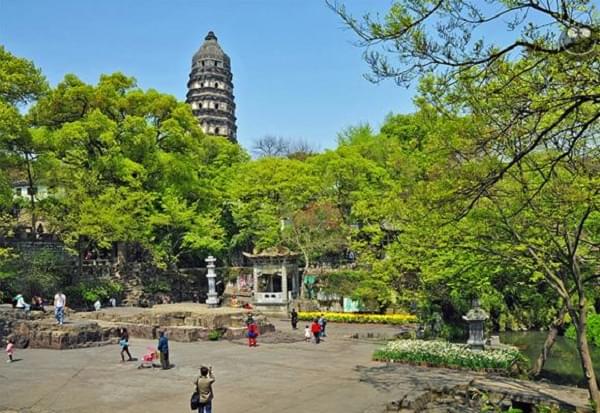
is the most famous sight in Suzhou city, enjoying the reputation of “the first scenic spot in Wu area” by its imposing beauty, including Leisure Spring, Testing Sword Rock, Third Spring, Broken-Pillar-Hall and Mountain Villa Wrapped in Emerald Green etc. With only 36 meters high and an area of 20hectares, you might think it is an artificial hill, but its history can be traced back to 2500 years ago. The Tiger Hill Pagoda in the park is the landmark of Suzhou city.
6. Lingering Garden (Liu Yuan)
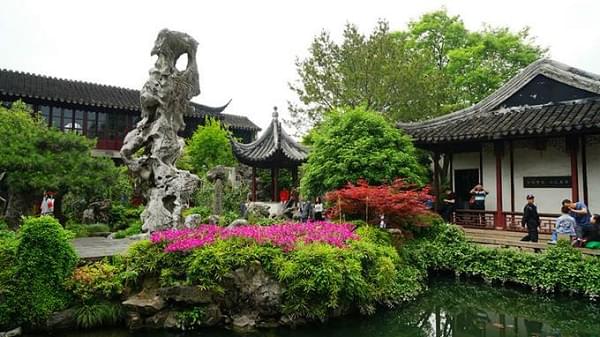
It was first built in 1522, one of the four most famous classical gardens in China. The garden is separated into the middle, eastern, northern and western parts connecting with beautiful corridors of 700 meters long. The whole garden features with artificial mountains, unique limestone, beautiful pavilions and a number of attractive buildings.
7. Tongli Water Town
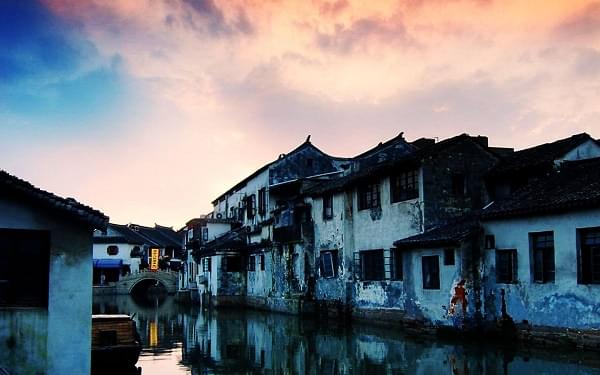
Originally named Fushi, Tongli Water town is an age-old but very well preserved water township with a history of more than 1,000 years. Located on the eastern shore of Taihu Lake, Tongli is a really wonderful travel destination where you can spend a marvelous holiday or experience traditional Chinese culture. Sometimes the smallest package can contain the most magnificent gift.
8. The Garden of the Master of the Nets
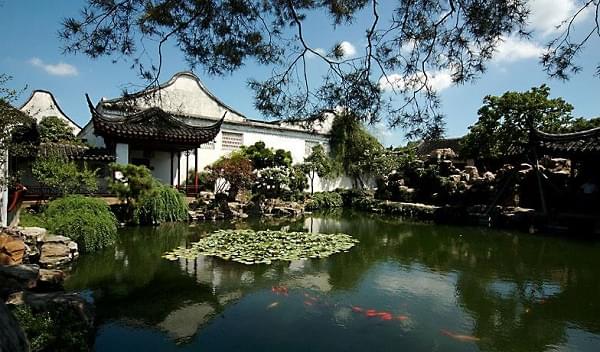
It is a clear example of this. It is the smallest of the Suzhou residential gardens, yet it is the most impressive because of its use of space which creates the illusion of an area that is much greater than its actual size. Even more than the architectural achievement is the mood of tranquility and harmony that this humble garden embodies. As you walk about the gardens and along the walkways, there are often views through windows onto beautiful flowers or plants framing them from a distance and drawing you to a single sight, a moment of peaceful natural beauty. (Join Suzhou and Shantang Water Town tour with $125 per person)
9. Lion Grove Garden (Shizilin)
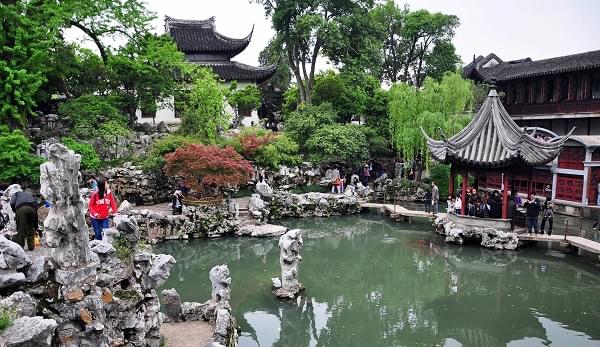
It is located on 23 Yuanlin Road, in the northeast of Suzhou-a city with profound cultural background and convenient developmental advantages. Lion Grove Garden is one of the four most famous and representative gardens of ancient classical style in Suzhou City. The other three are Blue Wave Pavilion (Canglangta), Lingering Garden (Liuyuan) and Humble Administrator’s Garden (Zhuozhengyuan). As the representative garden of the Yuan Dynasty, the most noted and attractive scenery of Lion Grove Garden is the labyrinthine rockery, which was mostly made of the limestone from Taihu Lake in Wuxi City.
10. The Retreat and Reflection Garden
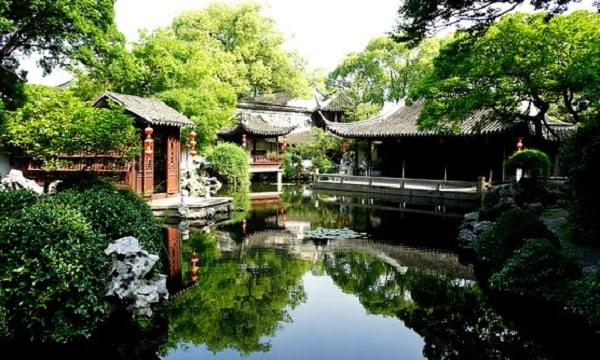
Built during the Qing Dynasty and named after a notable quotation from ¨Zuquan”, Tuisi Garden is the private mansion of Ren Lansheng ,a prefectural-level military official served in the reign of Emperors Tongzhi and Guangchu. Covering a total area of 9.8 mu, the garden is consisted of two sections. The exterior section has six courtyards divided into two parts and each of them is accommodated with a gateway, tea hall and main hall. On the eastern side in the interior section there stands Yuanxiang Tower which is named after the master’s own style name. The houses built on the south and north side of this courtyard are exclusively for the master and his family members.
Tuisi Garden is located on the right side of this courtyard. In the middle of this well-known garden grow many camphor trees with large crowns. Nearby Suihan Lodging there is a marble boat. Between the middle courtyard and the main structure of Tuisi Garden situates a moon-shaped gate with square bricks. Passing through this gate, you will be fascinated by a typical Chinese classic landscape composed by halls, pavilions, terraces, towers, stream, pond and bridge.
Update on Sep 20, 2017

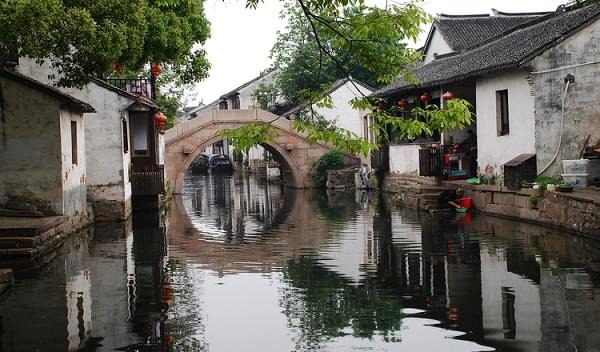
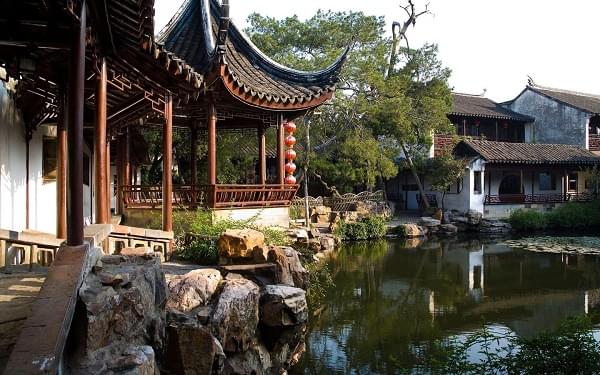

at 12:07 am
The gardens in SUZ are spectacular and so are the temples. We had a wonderful time exploring all of these attractions and found that using this interactive map made navigating much easier.
https://www.traveltosuzhou.com/interactive-map
at 10:22 am
Suzhou gardens or the venice of the east as iit is also known is a
peaceful place to visit when your in Jiangsu Province, China.
You can easily arrive there from Shanghai or Nanjing two big cities that are close by.
You can take the highspeed g-train, d-train,t-train or k-train.
Its is also possible to arrive by bus if you are coming from a
more remote place that doesnt have a train line.
There are many gardens in Suzhou and we offer amazing local tours of this Unesco World Heritage Site with friendly local guides who have been well trained
to give you the best possible experience. Afterwards
we will take you to the local restaurant with good quality fresh food that you will find amazing.